
WPC Wall Panel Solutions: A Cost-Effective Alternative to Traditional Materials

Let's start with a scenario we've all faced—or will face, if you're planning a renovation or new build: standing in a hardware store, staring at samples of wood, stone, and drywall, and feeling that familiar knot in your stomach. You want walls that look expensive but don't cost a fortune. You need something durable enough to handle kids, pets, or busy commercial foot traffic. And if it's easy to maintain? Even better. For years, homeowners and builders have been stuck choosing between "cheap but boring," "stunning but pricey," or "durable but high-maintenance." But what if there was a material that checked all three boxes? Enter WPC wall panels—a game-changer in the world of building materials that's quietly revolutionizing how we think about walls.
Whether you're a homeowner sprucing up your living room, a restaurant owner designing a cozy dining space, or a contractor working on a commercial complex, the right wall panels can make or break a project. And in a market flooded with options—from marble slabs that cost more than your monthly mortgage to drywall that scuffs if you sneeze too hard—it's easy to feel overwhelmed. That's where WPC (Wood-Plastic Composite) wall panels step in. Blending the best of wood and plastic, these panels offer a rare combination of affordability, durability, and style. Let's dive into why they're quickly becoming the go-to choice for residential building materials supplier and commercial building materials supplier alike.
What Are WPC Wall Panels, Anyway?
First things first: WPC stands for Wood-Plastic Composite. Think of it as the ultimate collaboration between nature and technology. These panels are made by blending wood fibers (often recycled sawdust or wood chips) with thermoplastics (like polyethylene or polypropylene), along with a few additives to boost strength and resistance. The result? A material that looks and feels like wood but behaves like plastic—minus the drawbacks of either.
Unlike solid wood, WPC panels don't warp, crack, or rot when exposed to moisture. Unlike pure plastic, they don't feel cheap or artificial; instead, they mimic the warm, organic texture of natural materials. And because they're made from a mix of recycled materials (up to 70% in some cases), they're also a more eco-friendly choice than harvesting new timber or relying on energy-heavy stone quarrying. It's no wonder that WPC wall panel supplier networks are expanding rapidly—demand is skyrocketing, and for good reason.
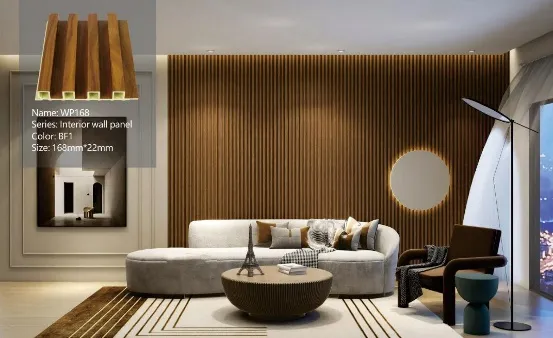
The Cost-Effectiveness Factor: Why WPC Beats Traditional Materials
Let's talk numbers—because at the end of the day, cost is often the deciding factor. Traditional wall materials have long forced us into a trade-off: pay more now for beauty, or pay later for repairs. WPC panels flip that script by offering long-term savings that start from day one.
Initial Cost vs. Long-Term Value
At first glance, you might think, "If WPC is so great, it must be expensive." But here's the surprise: WPC wall panels are often priced lower than high-end materials like natural stone or solid hardwood. For example, natural granite wall cladding can cost $15–$30 per square foot, while solid oak paneling might run $8–$15. WPC panels, on the other hand, typically range from $3–$8 per square foot—depending on the design and supplier. That's a fraction of the cost for a material that looks just as good.
But the real savings kick in over time. Let's take solid wood paneling: it needs annual sealing, painting, or staining to prevent water damage and fading. Over 10 years, that's hundreds (if not thousands) of dollars in maintenance. Stone? It's heavy, so installation requires specialized labor (hello, higher contractor fees), and if it cracks (which it can, thanks to temperature changes), repairs are costly. Drywall? Sure, it's cheap upfront ($1–$3 per square foot), but it dents easily, absorbs moisture (hello, mold!), and needs patching or repainting every few years. WPC panels? They're virtually maintenance-free. A quick wipe with a damp cloth is all it takes to keep them looking new. No sanding, no staining, no repainting. Over a 20-year lifespan, the savings add up to thousands—making WPC the smarter financial choice.
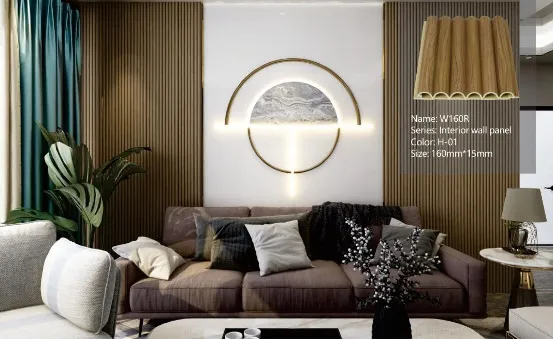
WPC vs. Traditional Materials: A Side-by-Side Comparison
| Material | Initial Cost (per sq ft) | Annual Maintenance Cost | Estimated Lifespan | Key Drawbacks |
|---|---|---|---|---|
| WPC Wall Panels | $3–$8 | $5–$10 (occasional cleaning) | 20–30 years | Limited color options in budget lines |
| Solid Wood Paneling | $8–$15 | $50–$100 (staining/sealing) | 15–20 years (with upkeep) | Prone to warping, rot, and termites |
| Natural Stone (Granite) | $15–$30 | $20–$50 (sealing) | 50+ years | Heavy (high installation costs), cracks easily |
| Drywall | $1–$3 | $100–$200 (repairs/repainting) | 10–15 years | Porous (mold risk), dents/scratches easily |
As the table shows, WPC panels strike the perfect balance between upfront affordability and long-term value. They outlast drywall by decades, cost a fraction of stone, and eliminate the endless maintenance of wood. For homeowners and businesses watching their bottom line, this is a no-brainer.
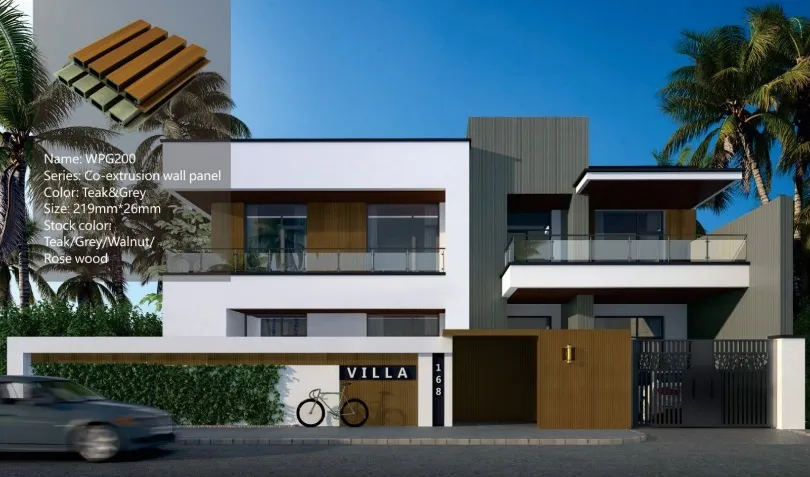
Durability That Stands Up to Real Life
Let's get real: walls take a beating. In a family home, they're bumped by toy trucks, scuffed by backpacks, and splashed by spaghetti sauce. In a café, they're leaned on by customers, wiped down with cleaning chemicals, and exposed to steam from coffee machines. In a gym, they're sweat-stained and jostled by equipment. Traditional materials crumble under this kind of pressure—but WPC panels thrive.
Here's why: WPC is moisture-resistant, which means it won't swell or rot in humid bathrooms, kitchens, or basements. Unlike wood, it's impervious to termites and other pests—no more worrying about tiny invaders munching through your walls. It's also scratch-resistant, so even if your dog decides to use it as a chew toy (we've all been there), the panel will hold its ground. And thanks to fire-retardant additives in many WPC formulations, it meets safety standards for both residential and commercial spaces. In short, these panels are built for the chaos of real life—not just a perfectly staged showroom.
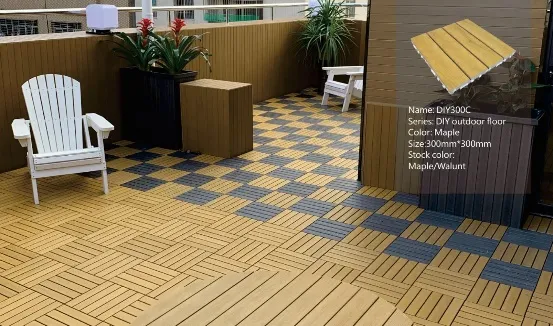
Style That Doesn't Compromise on Substance
Let's be honest: cost and durability matter, but if your walls look like plastic siding from a 1970s mobile home, none of that matters. Fortunately, WPC panels have come a long way in the style department. Today's options mimic everything from rich oak and rustic pine to sleek marble and industrial concrete—all with the texture and depth of the real thing.
Want a cozy cabin vibe in your living room? Opt for WPC panels with a wood grain finish in warm honey or deep walnut. Dreaming of a modern, minimalist office? Choose smooth, matte gray panels that look like polished concrete. Running a beach-themed café? There are even WPC panels that mimic weathered driftwood or seashell textures. And because they're manufactured in large sheets, you can create seamless walls without unsightly grout lines or nail holes. It's like having a custom-designed space without the custom-designed price tag.
Plus, WPC panels are incredibly versatile. They can be installed vertically, horizontally, or even in creative patterns (think herringbone or chevron) to add visual interest. Some suppliers even offer custom printing, so you can add logos, patterns, or artwork directly to the panels—a game-changer for businesses looking to brand their space. When you work with a reputable WPC wall panel supplier , the design possibilities are limited only by your imagination.
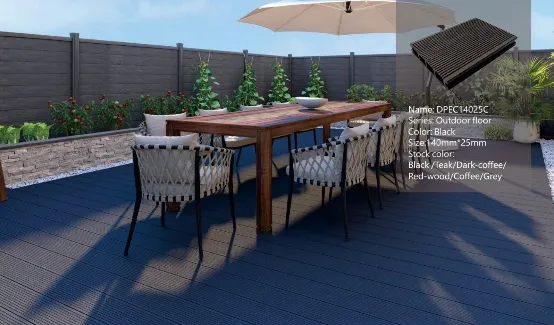
Sustainability: Good for Your Walls, Good for the Planet
In 2025, "sustainable" isn't just a buzzword—it's a priority. More and more homeowners and businesses are choosing materials that reduce their environmental footprint, and WPC panels deliver here, too. Because they're made from recycled wood fibers and plastic, they keep waste out of landfills and reduce the need for harvesting new timber. According to the Composite Panel Association, WPC products divert over 1.5 million tons of plastic and wood waste from landfills each year—that's like saving 30 million trees annually.
But it's not just about recycling. WPC panels also require less energy to produce than traditional materials. Manufacturing natural stone involves mining, cutting, and transporting heavy slabs—processes that guzzle fossil fuels. Solid wood paneling requires logging, which contributes to deforestation. WPC production, on the other hand, uses less energy and emits fewer greenhouse gases. Plus, since WPC panels last 20–30 years, they need to be replaced less often, further reducing their environmental impact. For eco-conscious builders and homeowners, this is a win-win: beautiful walls that don't cost the Earth.
Where Can You Use WPC Wall Panels? Everywhere.
One of the best things about WPC panels is their versatility. They're not just for living rooms—they work in virtually every space, from residential to commercial. Let's break down a few popular applications:
Residential Spaces
In homes, WPC panels shine in high-moisture areas like bathrooms and kitchens, where traditional drywall would mold and wood would rot. Imagine a bathroom with WPC walls that look like marble—no more scrubbing grout or worrying about water damage. They're also perfect for playrooms, where durability is key, or home offices, where you want a polished look without the upkeep. And because they're lightweight and easy to install, DIYers can even tackle small projects over a weekend—no need to hire expensive contractors.
Commercial Spaces
For businesses, WPC panels are a godsend. Restaurants, for example, love them because they're stain-resistant (hello, red wine spills!) and easy to clean (goodbye, endless scrubbing). Retail stores use them to create eye-catching feature walls that draw customers in, while offices appreciate their professional, modern look. Even high-traffic areas like airports or shopping malls benefit from WPC's scratch and impact resistance. And since they're available in large quantities through commercial building materials supplier networks, contractors can source consistent, high-quality panels for big projects—no more mismatched batches or delays.
Beyond Walls: WPC's Cousins in Flooring
Here's a bonus: WPC technology isn't limited to walls. Many of the same benefits apply to WPC flooring, making it a popular choice for flooring supplier catalogs. Imagine a cohesive space where your walls and floors match perfectly—same wood grain, same color, same durability. It's a designer's dream, and it's surprisingly affordable when you bundle wall and floor materials through the same supplier.
Installation and Maintenance: Easy as 1-2-3
Let's talk about the "easy" part. Installing WPC wall panels is a breeze compared to traditional materials. Unlike stone, which requires heavy machinery and specialized labor, WPC panels are lightweight and can be cut with standard tools (a circular saw or jigsaw works fine). They can be mounted directly to studs or existing walls using screws, adhesive, or clips—no need for messy mortar or grout. Even if you're not a DIY pro, a basic handyman can install them in a fraction of the time it takes to hang drywall or lay stone.
And maintenance? As we mentioned earlier, it's practically nonexistent. For day-to-day care, just wipe the panels with a soft cloth and mild soap—no harsh chemicals needed. If you spill something, blot it up immediately (though WPC is water-resistant, it's not completely waterproof, so don't let standing water sit for days). For tougher stains, a magic eraser or gentle scrub brush will do the trick. No sanding, no refinishing, no repainting—just walls that look new for decades.
Choosing the Right WPC Wall Panel Supplier
Of course, not all WPC panels are created equal. To get the best value, durability, and style, it's crucial to work with a reputable supplier. Look for a WPC wall panel supplier that offers:
- Quality materials: Ask about the wood-to-plastic ratio—higher wood content often means better texture, while higher plastic content boosts durability.
- Warranty: A good supplier will stand behind their products with a warranty (10–20 years is standard).
- Variety: Look for a wide range of styles, colors, and textures to suit your project.
- Sustainability credentials: Choose suppliers who use recycled materials and eco-friendly manufacturing processes.
- Customer support: Opt for suppliers who offer samples, design advice, and after-sales support—you don't want to be left hanging if you have questions during installation.
Remember, your supplier isn't just a vendor—they're a partner in your project. A great one will help you navigate options, stay within budget, and ensure your vision becomes a reality.
The Verdict: Why WPC Wall Panels Are Worth the Hype
At the end of the day, WPC wall panels aren't just a trend—they're a smarter way to build. They offer the warmth of wood without the warping, the durability of plastic without the cheap look, and the style of stone without the sticker shock. Whether you're a homeowner looking to upgrade your space on a budget or a business owner needing walls that can keep up with your busy operation, WPC panels deliver.
So the next time you're staring at those samples in the hardware store, remember: you don't have to choose between cost, beauty, and durability. With WPC wall panels, you can have all three. And as more residential building materials supplier and commercial building materials supplier add them to their catalogs, it's easier than ever to bring this innovative solution into your next project. Your walls (and your wallet) will thank you.
Tags:
Recommend Products










